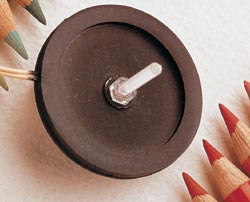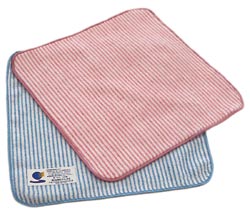| Web Japan > NIPPONIA No.32 > Special Feature* |
|
|
|
NIPPONIA No.32 March 15, 2005
|
|
Special Feature*
High-Tech Ceramic Products
Highly advanced "fine ceramic" techniques took a departure from
the traditional world of ceramics in the 1980s. The new ceramics
are made using precise calculations that consider everything from material to final processing techniques. Fine ceramic products have become an essential part of today's lifestyles.
Written by Takahashi Koki
Photo credits: Aloka Co., Ltd.; IT Co., Ltd.; Kyocera Corporation; Nissan Motor Co., Ltd.; Shinsei; ShinShu Ceramics Co., Ltd.; Toshiba Ceramics Co., Ltd.; TOTO Ltd. |
 |
The ideal, an engine made entirely of ceramic parts, is not yet reality, but some engines now have components like turbo rotors, glow plugs and hot plugs made from shock-resistant fine ceramics. They are more heat resistant, permitting fuel to be burned at higher temperatures. This increases combustion efficiency, thereby reducing fuel consumption, harmful exhaust emissions and noise.
|
Speaker devices made from piezoelectric ceramics vibrate when electric pulsations are transmitted to them. They can be made very small, thin and light, and they are energy efficient. When the devices are implanted into a material that will act like a vibrating board, the surface—for example, window glass, a wall or a desk top—becomes a speaker. The speaker was photographed next to pencil tips to show how small it is.
|
 |
 |
(ShinShu Ceramics) This cloth material was woven in a dye with a ceramic material that has a photocatalyst effect. The new type of cloth, called mairaifu, is made into towels, socks and sheets, because of its antibacterial, deodorant, and non-soiling properties.
|
|
||||||
|
||||||
|